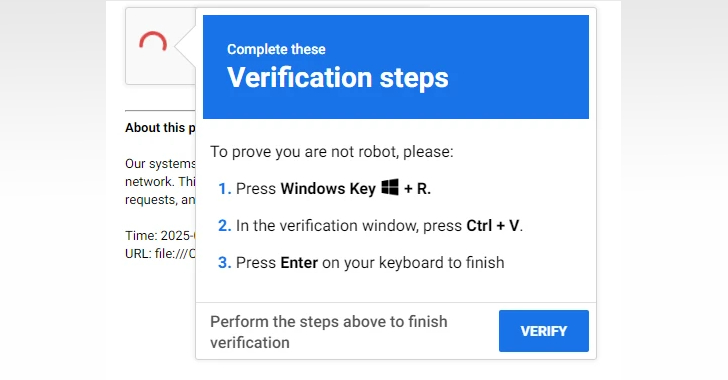
Why You Shouldn't Ignore CIS-Based Risk Assessments
In an increasingly interconnected world, where technology governs nearly every aspect of our lives, cybersecurity has become a paramount concern. The rise of cyber threats, data breaches, and malicious attacks on organizations and individuals alike underscores the need for robust cybersecurity measures. One invaluable tool in the cybersecurity arsenal is the CIS (Center for Internet Security) Critical Security Controls framework, which provides a structured approach to managing and mitigating cyber risks. In this article, we will explore why you shouldn’t ignore CIS-based risk assessments and how they can significantly enhance your organization’s cybersecurity posture.
Understanding CIS and the Critical Security Controls
Before diving into the reasons behind the importance of CIS-based risk assessments, it’s crucial to understand what the CIS and the Critical Security Controls are.
The Center for Internet Security (CIS) is a non-profit organization dedicated to enhancing the cybersecurity readiness and response of public and private sector entities. One of CIS’s primary contributions to the cybersecurity community is the development of the Critical Security Controls (CSC), a set of 20 security best practices that offer a systematic and prioritized approach to cybersecurity. These controls provide organizations with a roadmap for improving their cybersecurity posture, reducing vulnerabilities, and responding effectively to cyber threats.
- Prioritization of Security Measures
One of the standout benefits of CIS-based risk assessments is their emphasis on prioritization. Not all cybersecurity measures are created equal, and organizations often struggle with limited resources and budget constraints. CIS’s Critical Security Controls help organizations identify and focus on the most critical security measures that will have the most significant impact on reducing risk.
By following the CSC framework, organizations can prioritize their cybersecurity efforts and allocate resources where they will be most effective. This targeted approach ensures that organizations are not overwhelmed with countless security tasks but instead concentrate their efforts on addressing the most pressing vulnerabilities and threats.
- Adaptability to Evolving Threats
Cyber threats are continually evolving, becoming more sophisticated and elusive. What worked to protect an organization’s assets yesterday may not be effective today. CIS recognizes this reality and continually updates the Critical Security Controls to reflect the latest cybersecurity threats and trends.
By incorporating the latest threat intelligence and industry best practices, CIS-based risk assessments remain relevant and adaptable. Organizations that regularly assess their cybersecurity posture against the CSC framework can stay one step ahead of emerging threats, making it difficult for cybercriminals to find and exploit vulnerabilities.
- Comprehensive Coverage
CIS’s Critical Security Controls are comprehensive in scope, covering a wide range of security domains, including asset management, access control, continuous monitoring, and incident response, among others. This comprehensive approach ensures that organizations address security holistically rather than focusing on isolated aspects of cybersecurity.
Ignoring certain aspects of cybersecurity can leave organizations vulnerable to attacks. CIS-based risk assessments help organizations identify and rectify any gaps in their security posture, ensuring that all critical areas are adequately addressed.
- Industry Recognition and Adoption
The importance of CIS-based risk assessments is underscored by their widespread adoption and recognition within the cybersecurity community. Many governmental agencies, industries, and organizations across the globe recognize the value of the CIS Critical Security Controls and incorporate them into their cybersecurity frameworks and regulations.
For example, the U.S. Federal government mandates the use of the CSC framework for federal agencies as part of the Federal Information Security Modernization Act (FISMA). Similarly, industries such as healthcare, finance, and energy have integrated the CSC framework into their respective regulatory requirements and best practices.
By aligning with these industry-recognized standards, organizations can demonstrate their commitment to cybersecurity and improve their overall cybersecurity posture.
- Measurable Improvement
CIS-based risk assessments offer a structured and measurable approach to cybersecurity improvement. The Critical Security Controls are designed to provide clear benchmarks and guidelines for organizations to assess and enhance their security posture over time.
By regularly conducting CIS-based risk assessments, organizations can measure their progress in implementing the controls and track their cybersecurity maturity. This data-driven approach allows organizations to quantify their improvements and demonstrate the return on investment (ROI) of their cybersecurity efforts.
- Reducing Legal and Financial Risks
The consequences of a cybersecurity breach can be severe, leading to legal liabilities, financial losses, damage to reputation, and loss of customer trust. CIS-based risk assessments can significantly reduce these risks by helping organizations proactively identify and mitigate vulnerabilities before they are exploited by cybercriminals.
Investing in cybersecurity measures based on the CSC framework can ultimately save organizations from the potentially devastating financial and legal consequences of a data breach or cyberattack. In today’s litigious environment, such foresight is invaluable.
- Enhanced Incident Response
Despite our best efforts, no organization can guarantee 100% immunity from cyber threats. However, a robust incident response plan can make all the difference in minimizing the impact of a breach. CIS’s Critical Security Controls include guidance on incident response, helping organizations prepare for and respond effectively to cyber incidents.
By incorporating these controls into their incident response plans, organizations can detect and respond to breaches more swiftly, reducing the damage and downtime associated with cyberattacks.
Conclusion
In a digital landscape where the stakes for cybersecurity have never been higher, ignoring CIS-based risk assessments is a perilous decision. These assessments, rooted in the Center for Internet Security’s Critical Security Controls framework, offer a practical, adaptable, and industry-recognized approach to managing and mitigating cyber risks.
By prioritizing security measures, adapting to evolving threats, comprehensively addressing security domains, and continuously improving cybersecurity posture, organizations can better protect themselves against the ever-present danger of cyber threats. The measurable improvements achieved through CIS-based risk assessments can ultimately safeguard an organization’s finances, reputation, and the trust of its stakeholders.
In essence, CIS-based risk assessments provide a roadmap to cybersecurity resilience in an age where digital vulnerabilities abound. To ignore them is to invite unnecessary risk and uncertainty into an organization’s future.
Contact Cyber Defense Advisors to learn more about our CIS-Based Risk Assessment solutions.





